16+ SAMPLE IT Agreement
-

IT Agreement
download now -
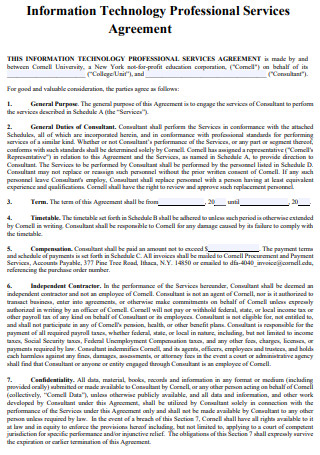
IT Professional Services Agreement
download now -
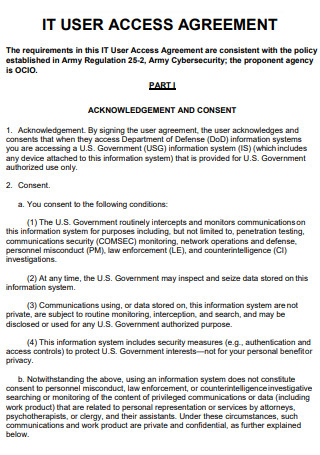
IT User Agreement
download now -
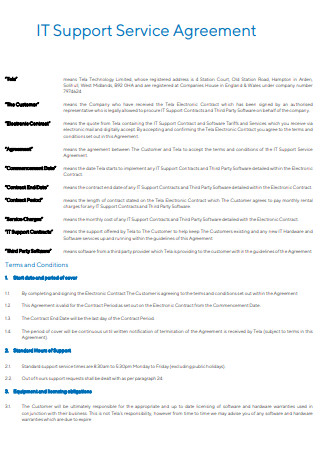
IT Support Service Agreement
download now -
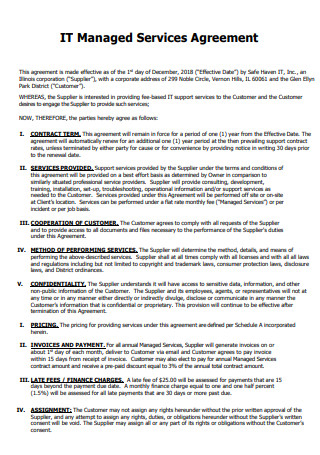
IT Managed Services Agreement
download now -

Graduate Assistant IT Agreement
download now -
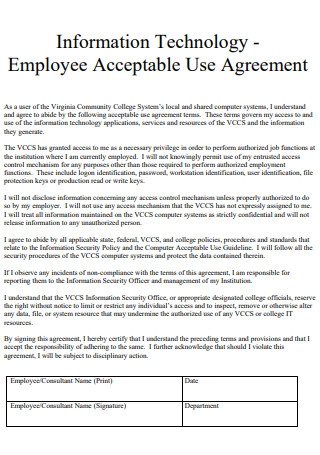
IT Employee Acceptable Use Agreement
download now -

IT Temporary Staffing Agreement
download now -
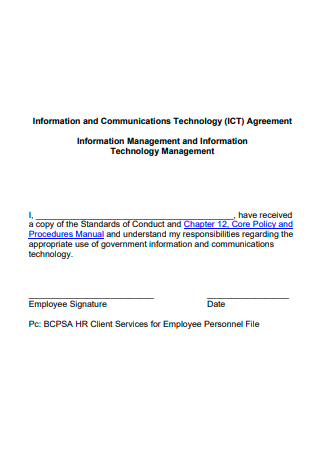
IT Communication Agreement
download now -

IT Electronic Device Agreement
download now -
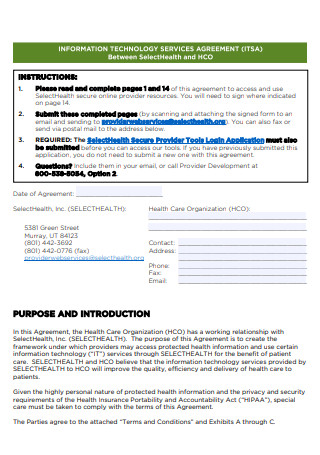
IT Service Agreement
download now -
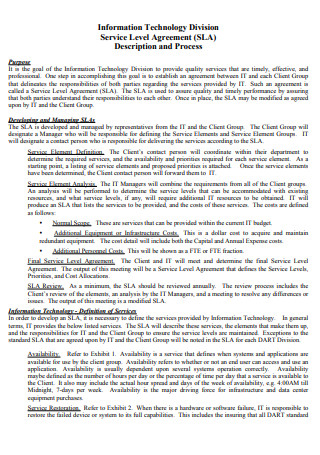
IT Division Service Agreement
download now -
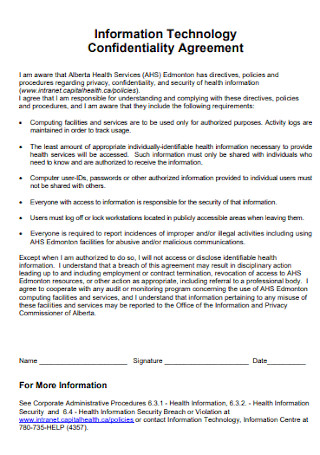
IT Confidentiality Agreement
download now -
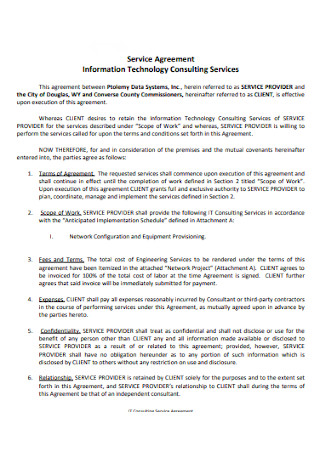
IT Consulting Agreement
download now -
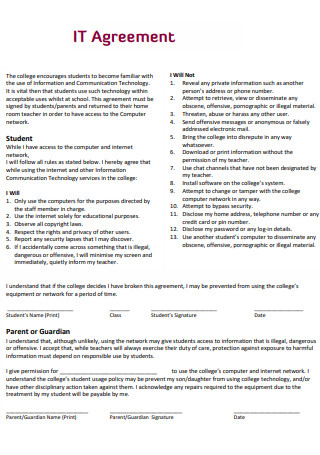
Sample IT Agreement
download now -
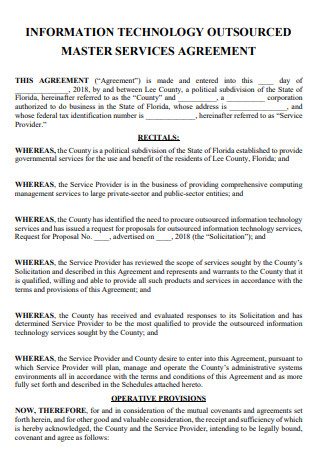
IT Outsourced Agreement
download now -
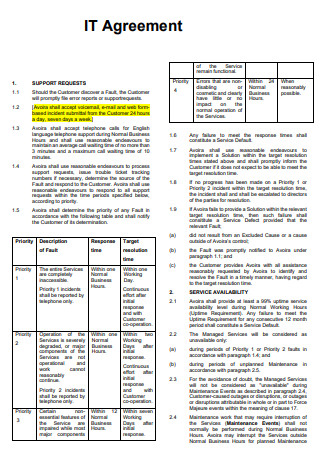
IT Agreement Example
download now
What Is an IT Agreement?
Any substantial contract for providing information and communications technology services and maintenance services to the company or any of its Subsidiaries is an IT Contract. The term “IT Contract Supplier” refers to any substantial third-party supplier who is contractually obligated to supply information and communications technology services and maintenance to the company or any of its Subsidiaries under an IT Contract. According to statistics, 91% of consumers consent to terms of service without reading them. This rate was significantly greater for younger persons, ages 18-34: 97 percent.
Benefits of a Managed IT
Managed IT enables firms to guarantee that the relevant people and resources are utilized optimally, resulting in financial advantage. Additionally, Managed IT may assist a firm in enhancing customer happiness, investing in new resources, optimizing the use of existing resources, and refining its agility. Here are a few ways managed IT benefits businesses financially:
Types of Agreements
The contract type employed in an agreement can refer to the document’s structure, compensation specifics, legal enforceability criteria, or associated hazards. The contracts described below are not interchangeable and cannot be utilized interchangeably. As promised, here is a complete inventory of every possible sort of contract.
-
1. Fixed-price Agreement
Fixed-price contracts, often known as lump sum agreements, are utilized when the payment is not contingent on the usage of resources or time. With fixed-price contracts, sellers estimate the entire permissible labor and material costs and then carry out the contract’s stated activity regardless of the actual cost. As a result, the agreement’s set price typically includes wiggle room if unforeseen expenses arise. Because the seller is risking employing a fixed-price contract, some will choose to give a range of pricing rather than a single dollar figure. Typically, these contracts provide rewards for early employment termination and penalties for missing deadlines. When joining a deal involving a fixed-price contract, anticipate that the contract creation and approval process will take slightly longer than usual. To ensure that they appropriately account for all time and resources, sellers will exercise extreme caution when setting the price. Fixed-price contracts are the most often employed type of contract in the construction industry. Contractors may choose a fixed-price contract because of its convenience, resulting in purchasers paying a more significant price upfront to avoid the headache of tallying the actual cost. However, that initial estimate can be challenging to nail down precisely.
2. Cost-reimbursement Agreement
With a cost-reimbursement contract, the project’s entire cost is established after the project or at another predetermined date within the contract’s time range. Before beginning the project, the contractor will prepare an estimated cost to give the buyer a sense of the budget. They will then reimburse you for the costs incurred to the extent specified in the contract. With cost-reimbursement agreements, the goal is to create a ceiling price that the contractor should not exceed without the buyer’s agreement. Simultaneously, if that ceiling is reached, the contractor has the option of ceasing work.
3. Cost-plus Agreement
A cost-plus contract used for building projects is a cost-reimbursement contract. The buyer promises to pay the project’s total cost, including labor, materials, and unforeseen charges. The term “plus” refers to the contractor’s amount to offset their profits and expenses. The buyer agrees to pay the additional sum and expects the contractor to keep their promise. When a cost-plus contract is used, the buyer typically has access to the whole list of charges, which helps them understand what they’re paying for. Also, they will often offer a maximum price to give them a sense of the most expensive-case scenario. Contractors will utilize cost-plus contracts if the parties’ budgets are constrained or if the project’s total cost cannot be accurately determined in advance. Specific cost-plus agreements may specify a cap on the amount of reimbursement so that if the contractor makes an error or acts carelessly, the buyer is not liable for the contractor’s errors. Contractors will choose cost-plus contracts since they allow for adjustments during the project’s duration, while the buyer receives the exact value they paid for. However, it can be infuriating to have the final price unknown, especially when obtaining that figure involves meticulous attention to detail.
4. Time and materials Agreement
A time and materials contract is identical to a cost-plus deal but less complicated. In these arrangements, the buyer compensates the contractor for the time spent on the project and the supplies used. Contracts for time and materials are also employed in instances where the scale of the project cannot be estimated. Your money will be spent on material expenses and the rate you compensate people for their time as a purchaser. At the outset of the process, you will almost certainly need to agree on the price of materials, including markup and hourly labor rates. Contracts based on time and materials demand documentation of everything on the job site, most notably the hours spent and goods utilized. Paying close attention to those elements will assist the contractor and buyer arrive at the most accurate final cost estimate. Contractors will employ time and materials contracts because they simplify the negotiation process and are adaptable to changing project requirements. The disadvantage is that time tracking and material management are arduous tasks.
5. Unit price Agreement
With a unit price agreement, the overall price is determined by the total number of individual units that comprise the project. When a contractor uses this contract, they give the buyer special prices for each section of the entire project and then agree to pay them for the number of units required to finish it. In these contracts, the term “unit” may refer to time, materials, or a combination of the two. While the parties may make estimates or educated guesses, the precise quantity of units cannot often be stated at the start of the project. Assume you’re negotiating with someone to resurface your driveway. It isn’t easy to estimate how much cement you’ll require precisely, but the contractor estimates that each truckload of supplies and associated labor will cost $1,000. Thus, if you want to redo your entire driveway, you must agree to spend $1,000 for each unit. While unit price agreements make contracts simpler to understand, on the contractor’s side, it can be easy for purchasers to compare rates with competitors, costing the contractor some business.
6. Bilateral Agreement
A bilateral agreement is one in which parties exchange commitments to carry out specific actions. One party’s promise serves as consideration for the other party’s security and vice versa. Both parties adopt the roles of obligor and obligee in bilateral contracts, which means they both have contractual obligations to fulfill and expect something of value. Bilateral agreements are most frequently used in sales transactions when one party guarantees delivery of a solution and the other party guarantees payment. There is a reciprocal relationship here since the obligation to pay for an answer is linked to supply it. If the buyer fails to pay or the seller fails to deliver, there has been a breach of contract. The primary feature of bilateral agreements is exchanging one value item for another, referred to as consideration. When only one party makes a valuable offer, this is a unilateral contract.
7. Unilateral Agreement
Unilateral agreements are arrangements in which one party commits to compensate another for performing a specific act. These contracts are most frequently utilized when the offeror has an open request that requires someone to react, do the show, and then pay the offeror. Although unilateral contracts are legally enforceable, legal complications typically arise when the offeree asserts their eligibility for money based on particular actions they have accomplished. The offeror refuses to pay the proposed amount. Courts will determine whether or not the contract was breached based on the contract’s clarity and the offeree’s ability to demonstrate that they are qualified for payment based on the facts in the agreement. Unilateral contracts are employed in situations such as open requests, in which anybody can respond, and in the case of insurance coverage. In these contracts, the insurer guarantees payment if an event specified in the agreement occurs. Thus, the insurance provider compensates the client if they are covered for the occurrence.
How To Draft an IT Agreement
Suppose you work in the technology industry, whether as a developer, distributor, or reseller, you absolutely must have an IT agreement in place for your customers. Whether you’re delivering software as a service (SaaS), licensing, or another business model, specific vital components must be included in your technology contracts to safeguard you and your business. Consider the following points while drafting your IT agreements.
-
1. Defining the term ‘use rights.’
When establishing your contract, the crucial first step is understanding what rights your clients are granting. Whether you are distributing a copy of the software to your customer for installation on their system or providing online access to the software you are hosting, you will want to limit the grant of intellectual property rights and preserve ownership. It is critical to be crystal explicit about the rights you grant to your consumers and then reserve all other rights and intellectual property for yourself to preserve your intellectual property.
2. Limiting your exposure
A critical safety for technology firms is the limitation of liability clause in an IT contract, which protects the intellectual property owner or the technology provider. Depending on its functionality, the software you provide may be critical to a customer’s capacity to conduct business. If your software is unavailable for any reason, you may be subject to significant damages claims. The contract should note that you are not accountable for a downtime caused by events beyond your power, such as power outages or natural disasters. If you are hosting the program, it should also include an estimate of expected downtime due to routine system maintenance.
3. Protecting secrecy and privacy
Confidentiality is another issue that is frequently addressed in IT agreements. Giving a customer access to your software often entails giving the customer access to your confidential information, such as proprietary data, a copy of the code, and documentation outlining your systems and processes. You will want your customer’s agreement not to share that information with others. If you have access to a customer’s personal information, such as when you host their data, they will expect you to enter into a similar agreement. If you store or have access to personal information about your customer, its customer, or personnel, you must also comply with any privacy laws.
4. Establishing terms of termination
Additionally, you’ll want to evaluate the circumstances under which either you or your customer should be permitted to terminate the agreement before its expiration. Certain agreement violations may warrant instant termination, such as illegal use or disclosure of confidential information. Others, such as late payments, may justify termination if the default has not been remedied during a stated grace period. IT contracts are critical for safeguarding your intellectual property and your business’s brand. Fully comprehending your risks and obligations is the first step toward ensuring that your agreements set reasonable expectations and protect your technology throughout time.
FAQs
Is breach of contract a legal term?
A breach of contract happens when the contract’s agreed-upon terms and conditions are violated. The violation could be as minor as a late payment or as significant as a failure to deliver a promised asset list.
What is an illustration of agreement?
The term “agreement” refers to the process of reaching a joint agreement, stance, or arrangement. An agreement is exemplified by two persons agreeing to split the rent on an apartment.
What does a cost plus bid entail?
A cost-plus bid arrangement is when the homeowner is charged the home’s actual cost plus a building fee. These contracts require the builder to produce a detailed accounting of every aspect of the project, from materials to labor to insurance.
The sample IT agreement template includes definitions, the point of contact, the commencement and termination dates, liability, general information, and other critical information. These contracts are highly recommended and beneficial for all firms that provide IT services and those wishing to partner with IT companies. They contain all of the information necessary to make the contract lawful and enforceable while safeguarding the interests of both parties.
